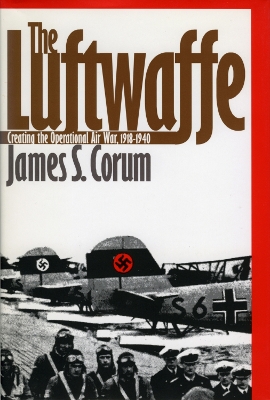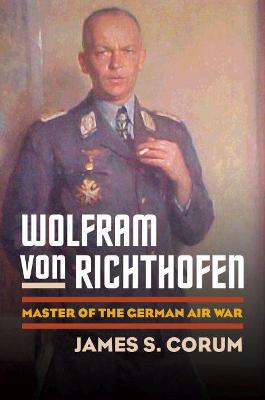Modern War Studies
4 total works
Between 1919 and 1933, German military leaders created and nurtured the Reichswehr, a new military organisation built on the wreckage of the old Imperial Army. James Corum traces the crucial transformations in military tactical doctrine, organisation and training that laid the foundations for the Nazi Blitzkrieg. He aims to provide a clear understanding of military thinking, reform and reorganisation in post-World War I Germany, as well as to raise important questions regarding fundamental processes in the study and development of military doctrine.
The use of airpower in wartime calls to mind the massive bombings of World War II, but aeroplanes have long been instrumental in small wars as well. Ever since its use by the French to put down rebellious Moroccan tribes in 1913, air power has been employed to fight in limited but often lengthy small conflicts around the globe. This volume presents a comprehensive history of airpower in small wars - conflicts pitting states against non-state groups such as insurgents, bandits, factions and terrorists - tracing it from the early years of the 20th century to the present day. It examines dozens of conflicts with strikingly different scenarios, inluding: the Greek Civil War, the Philippine Anti-Huk campaign, French and British colonial wars, the war in South Vietnam before the American escalation, and counter-insurgency and counter-terrorist campaigns in the Middle East.
At the end of World War I, the German military lay in ruins, forbidden any attempts to rebuild. But by the dawn of World War II, its army and air forces had both risen phoenix-like to conquer most of Europe. James Corum shows that the Luftwaffe's dramatic resurrection was remarkable and that it emphatically underscored the success of Germany's visionary interwar planning. Corum's study provides an account of the evolution of German military aviation theory, doctrine, war games and operations between the two world wars. It reveals how the Germans, in defiance of Versailles, thoroughly studied and tested the lessons of World War I, analyzed the emerging air doctrines of other nations, and experimented with innovative aviation technology to create the world's most powerful air force by 1940. Drawing heavily upon archival sources, Corum discloses the debates within the General Staff - led by the likes of Hans van Seeckt, Helmuth Wilberg, Wolfram von Richthofen and Walter Wever - about the future role of airpower and the problems of aligning aviation technology with air doctrine. Challenging previous accounts, he demolishes a number of myths.
He demonstrates, for example, that Germany did not dismiss the potential of strategic bombing, did not embrace "terror bombing" of civilian populations, and was not heavily influenced by its popular culture's romance with aviation. Corum also illuminates Germany's comprehensive approach to highly mobile combined arms warfare, its secret research and training in the Soviet Union, and its remarkable successes during the Spanish Civil War. While focusing primarily on the interwar period, he extends his analysis into the early years of the war to examine the Luftwaffe's effectiveness in Poland and France, while exposing its flaws in the Battle of Britain. As a companion to Corum's acclaimed study of the German army between the wars, "The Luftwaffe" widens and deepens our understanding of one of the greatest fighting forces ever assembled and reminds us how ideas, as much as men and machines, can alter the fates of nations with stunning results.
He demonstrates, for example, that Germany did not dismiss the potential of strategic bombing, did not embrace "terror bombing" of civilian populations, and was not heavily influenced by its popular culture's romance with aviation. Corum also illuminates Germany's comprehensive approach to highly mobile combined arms warfare, its secret research and training in the Soviet Union, and its remarkable successes during the Spanish Civil War. While focusing primarily on the interwar period, he extends his analysis into the early years of the war to examine the Luftwaffe's effectiveness in Poland and France, while exposing its flaws in the Battle of Britain. As a companion to Corum's acclaimed study of the German army between the wars, "The Luftwaffe" widens and deepens our understanding of one of the greatest fighting forces ever assembled and reminds us how ideas, as much as men and machines, can alter the fates of nations with stunning results.
Luftwaffe commander Wolfram von Richthofen was a brilliant master of the tactical and operational air war and one of the key catalysts in the resurrection of Germany's air force. Long overshadowed in history by his cousin, World War I's famous ""Red Baron,"" von Richthofen served in seven major air campaigns from 1936 to 1944, and as senior air commander he was always at the center of the action.For this first full-length biography of von Richthofen, James Corum has mined the field marshal's extensive diaries, which provide a detailed record of military campaigns, tactical and operational problems, interactions with other commanders, and his assessment of methods and weaponry. He has also drawn on interviews with former Luftwaffe members and on his unparalleled access to von Richthofen family papers and photos.Corum reveals how, before World War II, von Richthofen played a central role in developing and building the Luftwaffe and such famous aircraft as the Me 109 fighter and He 111 bomber. He then delivered tactical and operational successes in the Spanish Civil War, where he established the close air support tactics that became an essential trademark of the German blitzkrieg. As commander of the Special Air Division in the invasion of Poland, he demonstrated the effectiveness of massed airpower and in 1940 helped produce a dramatic German victory in France by providing close air support for Von Kleist's panzer divisions as they raced to the English Channel. Later he also led the Luftwaffe's Second Air Fleet against the Allied landings in Sicily, Salerno, and Anzio.Providing a fully rounded portrait, Corum also cites von Richthofen's signal defeats in the Battle of Britain and around Stalingrad; depicts his arrogant and ruthless tendencies; and reveals his loyal but naive belief in Hitler.Cutting through the myths that have grown around von Richthofen's life, Corum's study fills a major gap in the literature and offers new insight into German military culture, Hitler's strategic thinking, and their impact on the German way of war.



